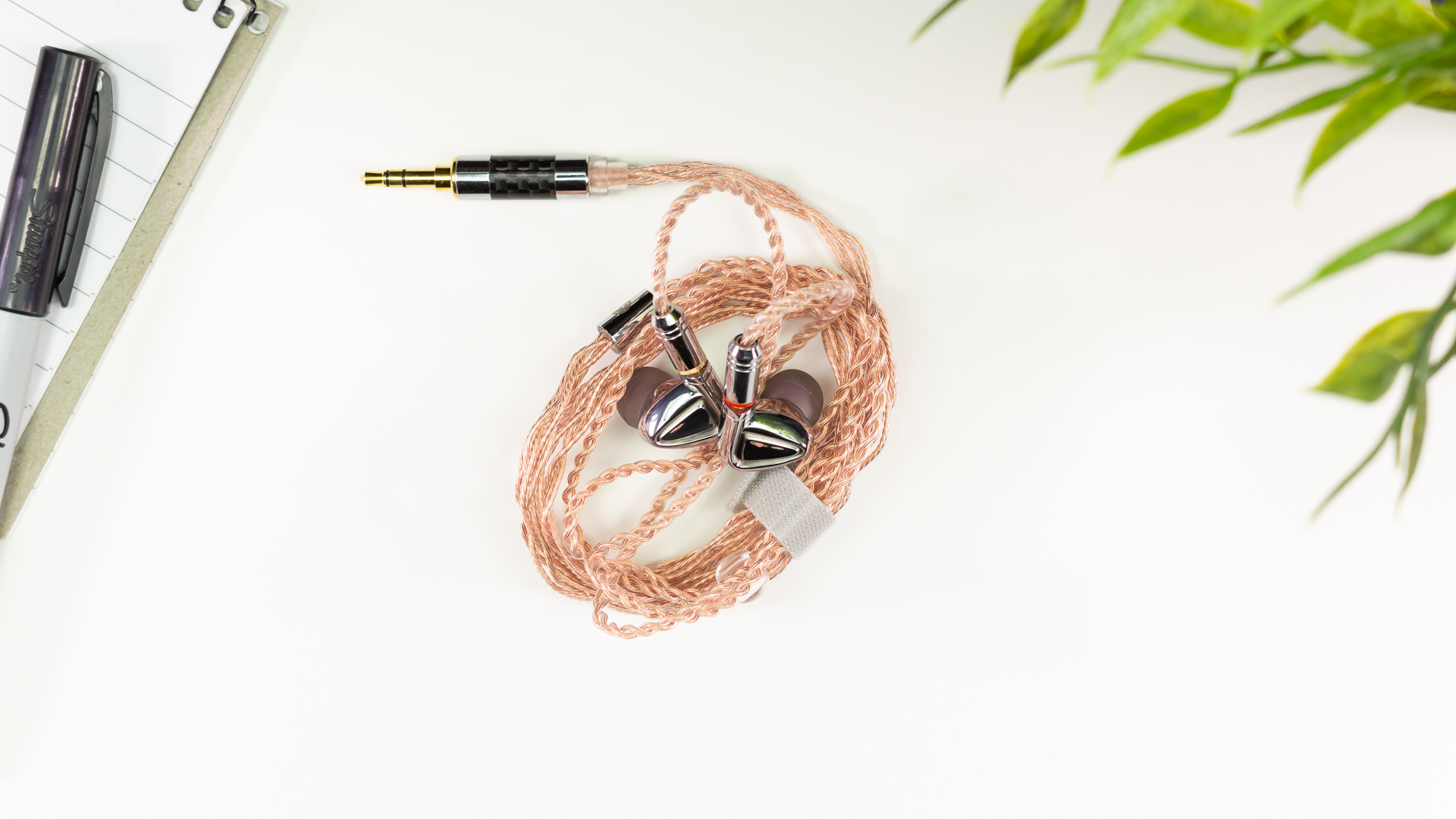
Specs
- Driver: 10mm planar magnetic
- Frequency response: 10 – 40kHz
- Impedance : 20-ohm
- Sensitivity : 96 dB/mW
- Weight: 6.5g per earpiece
Design

I have to admit that the P1 actually does feel quite premium considering what the asking price is. The entire shell is made of metal and features a fairly-even polished finishing. The only areas where the finishing isn’t as good is on that triangular design of the faceplate, and then the seam where the 2 halves of the shell are joined together. The seam is not just visible, but you can also feel it in certain areas as well. However, the seams also don’t make the P1 feel any less premium than what something like the Pinnacle P1 from MEE Audio feels. It too has a seam which can be seen and felt. So really, it’s easy for me to forgive the Tin HiFi for this relatively minor imperfection.
They do have a little bit of weight to them as each earpiece weighs roughly 6.5g, but it’s also not so heavy as to cause any discomfort whilst wearing them.
But, speaking of the comfort, I think this is where my main criticism of the P1 will come into play.

Actually, it’s not so much the comfort as it is the lack of a secure fit. These don’t have a particularly long nozzle, and due to the shape of the shells, the P1
doesn’t really seem to sit in my ear quite correctly. Those lack of ergonomics along with the shorter nozzle means that I was having a really tough time keeping them in my ears. This was especially true with the silicone tips as I would slowly feel as they lost the seal over the course of a few minutes. This made it it really annoying as it meant having to readjust them more often than what I’d like. I had the same issue with the T2, so it seems that Tin Hi-Fi are pretty good at getting the sound right, but it seems they are struggling in the ergonomics department.



Ok, lastly there is the cable. For the most part, it looks pretty nice. Where the 2 channels are separated the cables are twisted together fairly tightly, but the portion before the splitter does look a bit sloppy. Here the individual cables are braided rather than twisted, but it’s a very loose braid, which makes it look and feel less premium.The cable connector also looks a bit generic as we’ve seen this design on countless Chi-Fi earphones now. I think, if I were to own the P1, then I would probably replace the cable with something which feels a bit nicer, such as one of FiiO’s replacement cables. Thankfully, the P1 features standard MMCX connections, so swapping the cable is very easy to do.
So yeah, the design is pretty good but it’s what Tin has done on the inside which really interested me, and that’s because these feature a planar-magnetic driver. This is something which is very uncommon for IEMs and especially at this price-point. But I reckon it’s because of this type of driver that these IEMs not only sound as good as they do, but also why they’ve received so much hype.
Sound
Now, whenever there is so much hype surrounding a product, it can often be a bit difficult to get an accurate judgement on the sound character, as the hype itself could lead to your expectations exceed reality, and then subsequently you might feel let down if the product doesn’t match those expectations. On the flip side, your own cognitive biases might also influence your perception of the product because you’ve been told over and over again how good it’s supposed to be.
So, where does the P1 fall into all of that? Well, let’s take a look at the frequency response graph to get a clearer picture of what’s going on here.
As is always the case with IEMs, the tips used will alter the frequency response, so let’s quickly go through those.
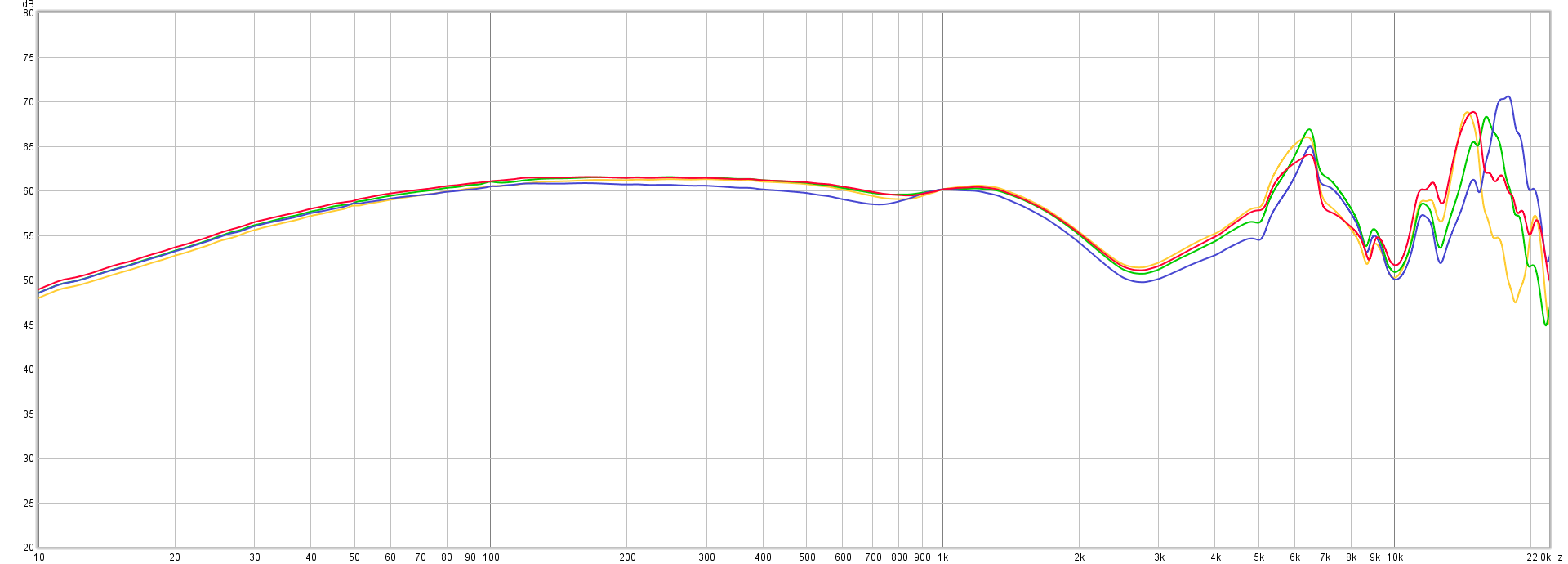
The green line is with the standard silicon tips included in the packaging, the red is with the foam tips, the blue is with the JVC Spiral Dot tips, and then finally the yellow shows the response when using Spinfit tips.
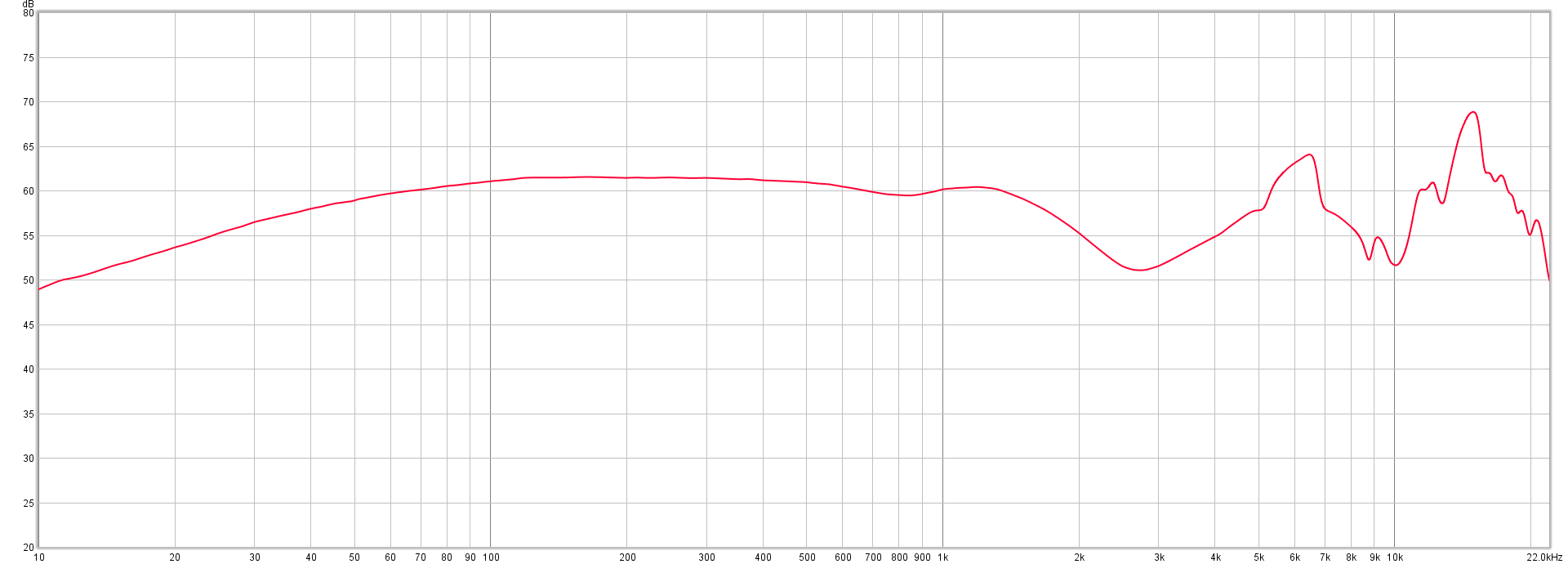
Of these responses, the foam tips seem to give the most balanced response as it slightly increases the bass whilst subsequently decreasing and smoothing out that peak between 5-7kHz. So, when it comes time to compare the response of the P1 to other IEMs, I’ll be referring to the response of the P1 when using the included foam tips.
Starting from the bass, we can see that there is a bit of roll-off here, but it’s only about 8dB or so between 150Hz and 20Hz. Then it remains pretty linear until after 1kHz where it drops down to just before 3kHz, then picks up again with a peak between 6kHz and 7kHz, and then goes through a few crests and valleys in the upper registers.
What this signature overall gives me is a bit of a mixed bag. On the one hand that hump in the bass does tend to give it a slightly warmer tonality, but then when we get to the treble, that extra sparkle can make it seem just a little on the bright side. Overall, I’d say it sounds balanced, but not quite neutral. I think if it had more energy in the sub-bass, then that might have balanced the treble peak just a bit more.
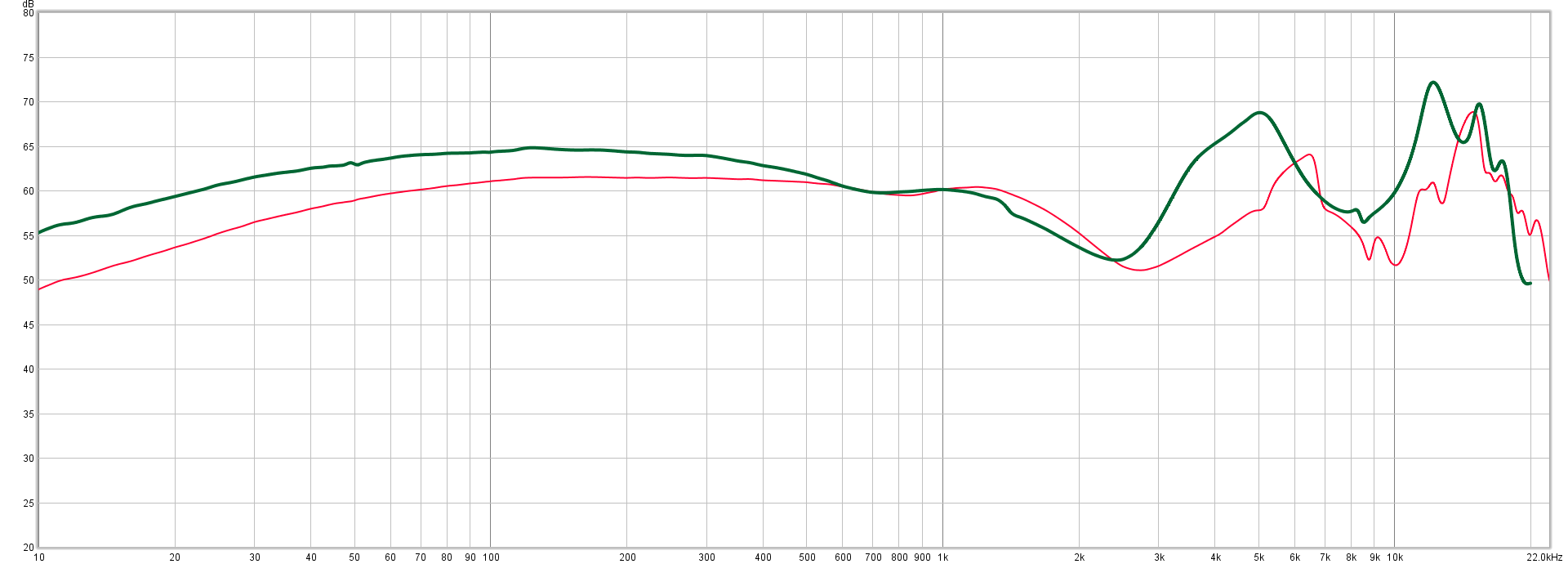
But I must admit, when I started listening to the P1, it did remind me of the Pinnacle P1 which I briefly mentioned earlier, and if we take a look at their respective frequency responses, then we can see some similarities here and there.
Comparatively, the Pinnacle P1 has a bit more energy in the bass and sub-bass regions, but it also has a considerably sharper peak at around 5kHz, and again at around 12kHz. Overall, my preference here for the sound signature would go to the Tin P1 as it just feels more balanced than the Pinnacle P1, which in turn has a more v-shaped signature along with a more metallic sounding treble response.
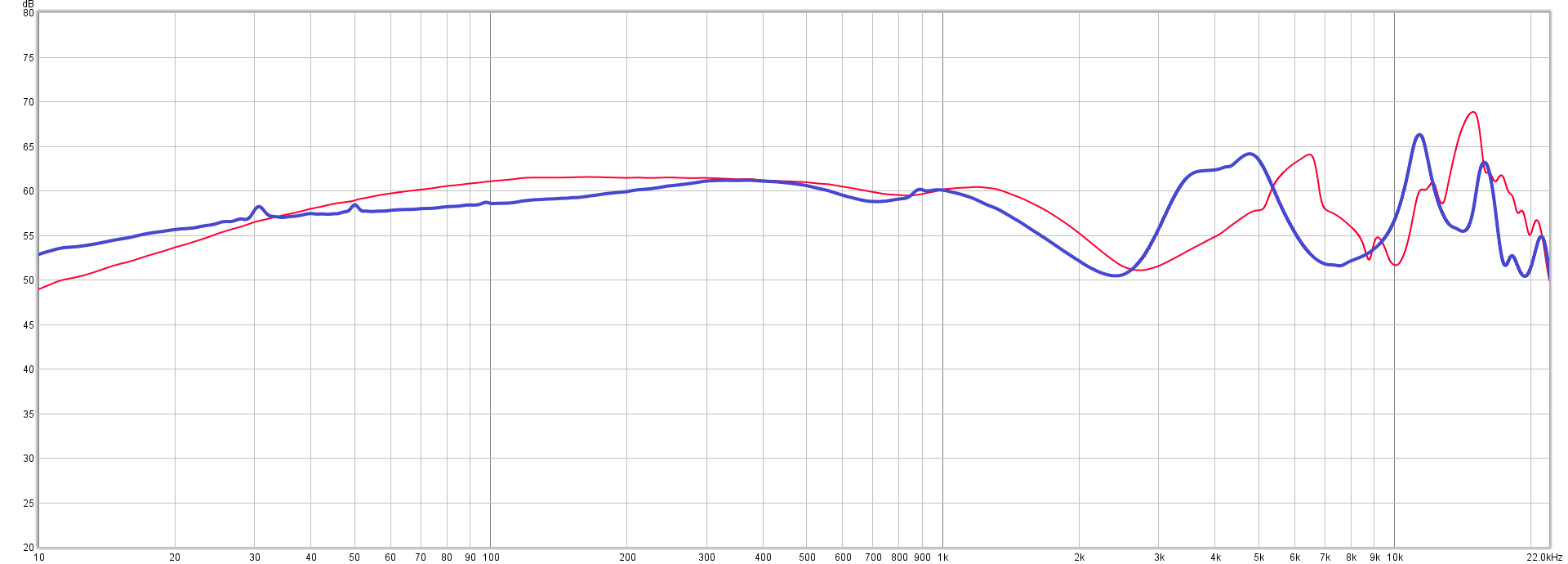
But, of course, I think more people would be interested in seeing a comparison between the Tin P1 and the Tin T2, and we definitely can see a closer relation between those 2 models in their response graphs.
Interestingly enough, when the graphs are centered at 1KHz (which is done to ensure that they are volume-matched when performing frequency sweeps), the T2 actually has a bit more sub-bass than the P1, but between about 40Hz and 300Hz, the P1 has a bit more presence. This seems to give the P1 a little more warmth and body compared to the T2. Then, perhaps that earlier hump between 3.5kz and 5kHz and the final peak at roughly 11kHz is what also contributes to the T2 having a brighter overall signature than what we get on the P1.
I still do think the T2 is pretty good for the money ($50), the P1 does come across more balanced and refined in comparison. Although, I would be lying if I said that I didn’t wish the P1 had just a bit more sub-bass and a little less elevation in those treble peaks.
Value
So, do I think the P1 is hype worthy? Does it deserve the hype it has been given over the last 3 or 4 months? I’m not entirely sure, to be perfectly honest. You see, the thing is, if I had reviewed the P1 a couple of weeks ago, then I think I may very well have said that it’s an absolute bargain for the price.
Unfortunately for the P1, but perhaps fortunately for you, is that I got my hands on the Etymotic ER2XR.
As noted in my review of the ER2XR, it has quickly become my newest benchmark in terms of both audio quality and value. The retail price for the ER2XR is the same as that of the P1, so it really makes it difficult for me to recommend the P1 over the ER2XR if given a choice between them.
But then again, because of the relatively awkward fit required for the ER2XR, not everyone will be able to get comfortable with them, and it’s in that instance where the P1 will take the 2nd spot for me.
No, they don’t really have the same signature. The P1 has more treble energy, less bass, and just overall doesn’t feel as balanced, coherent, and natural as the ER2XR, but that does not mean that the P1 isn’t any good either.
Instead, I think the P1, for what it is, does sound really, really good. So no, I don’t think it quite lives up to the hype around it, but I have absolutely zero doubt as to why there is so much hype around it.
It’s one of those IEMs which really can go toe-to-toe with more expensive counterparts, but it’s also not the only one which punches well above its weight.
So, do I recommend the P1? Absolutely. If you cannot get along with something like the ER2XR (or any other Etymotic), or if you perhaps prefer a more rolled off bass and slightly elevated treble response, then the P1 is a great choice, in my opinion.
The only thing that I feel is a flaw would be that shallow fit as it really can make it rather fiddly to get the P1 to sound its best. If you use the foam tips, then it definitely makes it easier to get the right fit, but if you don’t like the feeling of foam tips, then it might very well make things a bit trickier for you.
Anyways, as a complete product, from the packing to the build and sound quality, the P1 does pack quite a lot of value. So, if you can, do check it out.


